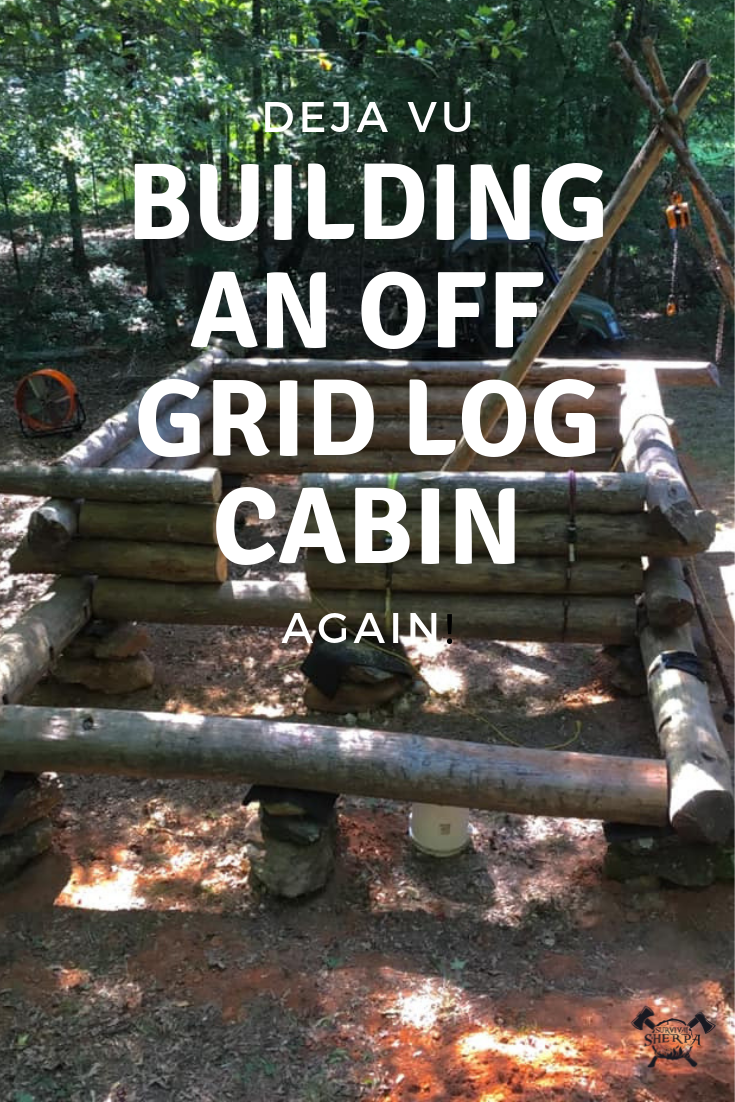by Todd Walker
Many thanks to these fine friends on demolition epoch!
Deja vu
After the junk rectified, the job of rebuilding began. I figured reassembly would take little meter. I was right.
Foundation
I decided to go back with dry-stack stone wharves for the foundation. This would save money since the tract had spate of stones for stacking. Stones I couldn’t physically filch, there were several, I worked my line come-a-long to inch them onto a trailer. My friend’s tractor would have made this task a breeze, but it was in the shop for repairs.
One lesson learned from the first stone foundation was I didn’t need to be exact on stacking each pier. I got them close to level utilizing a water line and tweaked them as needed once the sill records were on top. Dimensional lumber would require each pier to be exactly the same height. If you enjoy putting problems together, this occupation is for you.
Sill Logs
I needed to start stacking records. The challenge was to transport the two 1,000 pound, 18 hoof sill logs from the previous area to their new dwelling. My log haul activity consisted of Donkey Kong( 4-wheeler) and Junior( LogRite Arch ). This duo have been successful in hauled all the other cabin records across the creek, up a 75 yard lower which spawns young men huff and puff, and across the road to my place.
I bridged my paws and headed toward the creek with a sill log in-tow. Donkey Kong traversed the bay and stopped with its front tires off the sand. The opposite intention of the long record was stuck on the other side of the bay. I knew then that I was in for a long afternoon of winching up a engulf slope. After five winching chapters, we uttered it to the surpass! And in 90+ severity Georgia heat with high-pitched humidity. I was soaked.
I rebuilt my lifting tripod at the brand-new area, hung the order die, and started determining sill records. The first sequence is important and makes the longest to get set. To square the areas, the Pythagorean Theorem was used to form a 3-4-5 triangle at each corner.
Five sill enters prepared and squared at the new site.
Log Courses Going Up
Before disassembling the compartment, each record was labeled to offset putting it back together a no-brainer. It’s like coat by numbers.
Logs placed in order for assembly.
Every log you insure was felled and bucked with an ax, with a few cases back chips using a one-man hand perceive. Logs were debarked with a barking sud or glean pierce. Most of the assembly on the original area was does so with a bracing and chip and sledge hammer. I picked this pioneer procedure the first time around. On the rehabilitate, I’m running power tools with a generator. The exploit of modern tools has sped up the process substantially. I even have a shop fan to move hot air around the brand-new site.
Flooring Joists
Those who have followed this log cabin build may recollect the hand-hewn log floor joists on the first erect. I spawned the decision to abandon this storey structure. Why? Two reasons…
During disassembly, we discovered that one sill log notched to accept the floor joists had significant rot. This record arriving from a dead-standing pine tree which seemed to be solid. I opted to replace it with another record. Even if the sill record had remained solid, I rapidly realized that the adjustment of the two notched sill enters had to be perfect to accept the hewn log joists.
Pressure discussed log was used as joists. It was cheaper on some timbers than non-treated. Plus, I’m not sure how long it’ll take to get a roof over the room. The aged plywood subfloor was salvaged and tacked on the brand-new joists as temporary flooring.
Installing flat councils on round records had a few challenges. There are gaps between the two, some roughly 1.5 inches. I used shims to keep the 2×8′ s rim joists plumb. Six inch pins secured the joists where vast gaps seemed. Joist hangers were set on 16 inch centers for the 10 foot run on the floor.
Temporary flooring with lifting tripod.
The front porch joists are 2×6′ s to cover a span of less than 6 feet.
We’ll keep practise until we finish this log cabin. We’ve been here before.
Keep Doing the Stuff of Self-Reliance,
~ Todd
P.S.- You can also keep up with the Stuff we’re Doing on Twitter, Pinterest, YouTube, Instagram, and Facebook … and over at our Doing the Stuff Network.
P.P.S- If you find evaluate in our blog, Dirt Road Girl and I would appreciate receiving your vote on Top Prepper Sites! You can vote daily by tick here or on the portrait below. Check out all the other value-adding locates while you’re there…
Thanks for Sharing the Stuff!
Copyright( c) by Survival Sherpa: Content on this website( unless the work of a third-party) may be shared freely in digital form, in part or whole, for non-commercial use with a connection back to this site crediting the author. All ties in articles must remain intact as originally posted in order to be republished. If you are interested a third-party article, please contact the author instantly for republishing information.
Read more: survivalsherpa.wordpress.com
